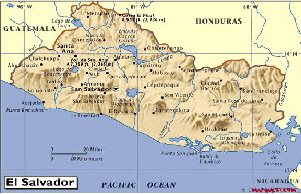


El Salvador is the smallest and most densely populated country in Central America. With an area 21,393 km2, it is about the same size as Wales. In 1996 its GDP per capita was US$1,791 (Source: SBS World Guide, 1999), which is less than a third of a typical student loan. In recent years the country, recovering from the civil war that ended in 1992, was seriously damaged by Hurricane Mitch in 1998 and later by two major earthquakes in early 2001. The capital, San Salvador, is the most frequently earthquake-damaged city in Latin America.
On
the 13th January 2001 El Salvador was hit by a massive earthquake of magnitude
7.7 - the greatest magnitude registered in the country in the last 100
years. A month later, the recovering country was hit by a second major
earthquake, of magnitude 6.6. The following table shows the total figures
of damage after the earthquakes; it has been estimated that 90% of the
figures for dwellings correspond to adobe houses. The degree of damage
was certainly exacerbated by the use of structurally inadequate adobe
construction techniques. The earthquakes took place at 12 noon and 8am
respectively, when the majority of people were out of their houses. It
is feared that the death toll could be much higher if future earthquakes
occur at night.
| 13th January | 13th February | |
| Deaths | 844 |
283 |
| Persons Injured | 4723 |
2937 |
| Houses Destroyed | 79,979 |
32,148 |
| Houses Damaged | 1,329,806 |
173,356 |